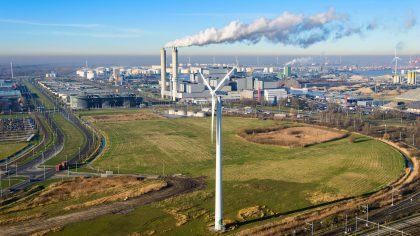There are different supply temperatures for residential heat pumps depending on type of refrigerant and refrigerant cycle (for instance single or cascade systems). Regular residential air source heat pumps typically supply heat at a temperature of up to 55°C (Khoa Xuan Le et al. (2019). This however does not work efficiently with traditional wet radiators in homes that are usually designed for an inlet temperature of 75°C and a return temperature of 65°C (Khoa Xuan Le et al. (2019). High temperature heat pumps can achieve these temperatures; typically these heat pumps reach a temperature of 65ᵒC up to 80ᵒC (Carbon Trust and Rawlings Support Services, 2016). This temperature level is sufficient for space heating and domestic hot water. No (significant) adjustments to the heating system in the dwelling are required in that case.
The working principle of a heat pump is a reversed refrigeration cycle (see also Staffell et al., 2012). An air source heat pump extracts heat from the outside air (ambient heat) using an evaporator where a refrigerant flows through that absorbs heat. After evaporation, an electric driven compressor increases the pressure, after which the refrigerant condenses back to a liquid (within the condenser) to release heat to a heat exchanger. An expander makes the refrigerant ready for heat absorption. Heat released (within the condenser) is transferred to the dwelling. The transport medium for heat in the dwelling is water (e.g. wet radiators or underfloor heating).
The efficiency of a heat pump is expressed as the coefficient of performance (COP): the ratio between heat output and electricity input. The COP depends on the temperature difference between supply temperature and heat source, in technical terms the temperature difference between heat source and heat sink. The higher the temperature lift, the lower the COP. For instance, in winter, there is a larger temperature lift, resulting in a lower COP. At a certain point the temperature difference will be too great for the heat pump to operate (efficiently) and the heat pump has to be stopped. For most air source heat pumps this will occur at temperatures in the range of –15°C to -20°C (Forsén, 2005). At that point auxiliary heating is required.
All information in the datasheets is also available in ESDL (Energy System Description Language). You can find them in the Energy Data Repository (EDR).


